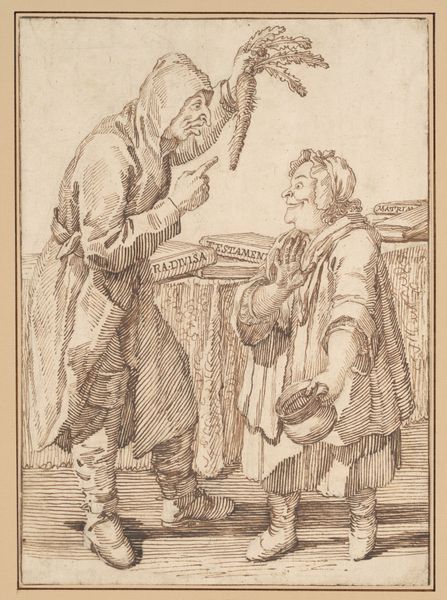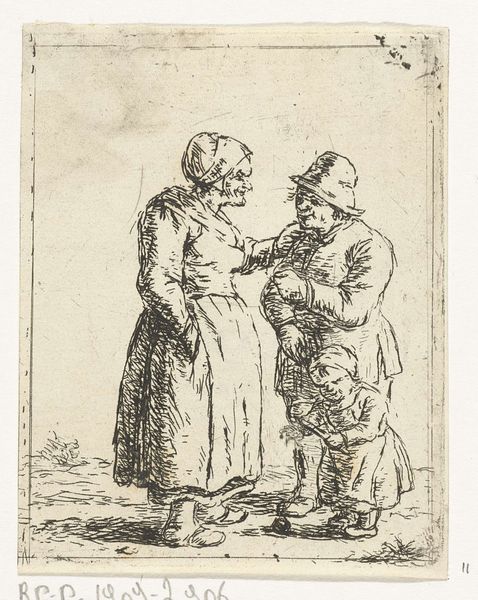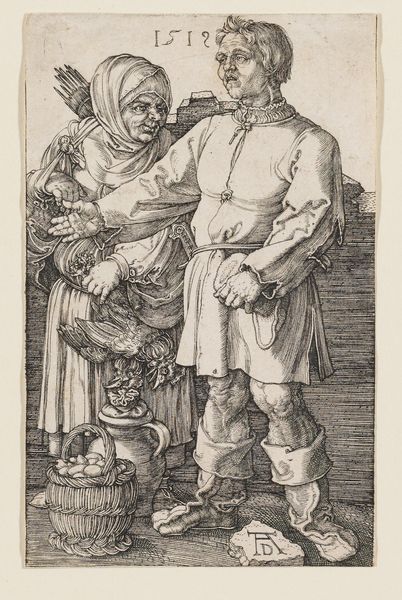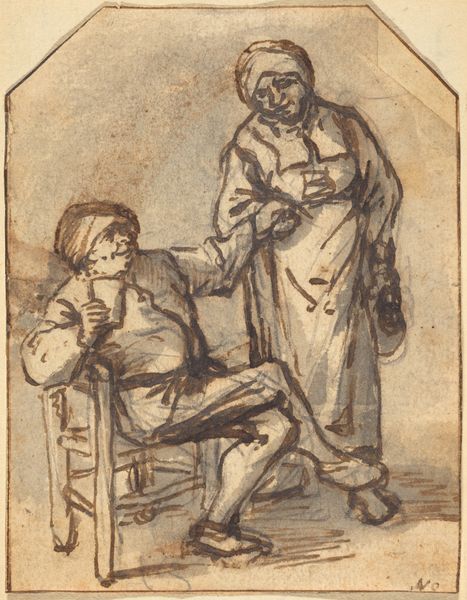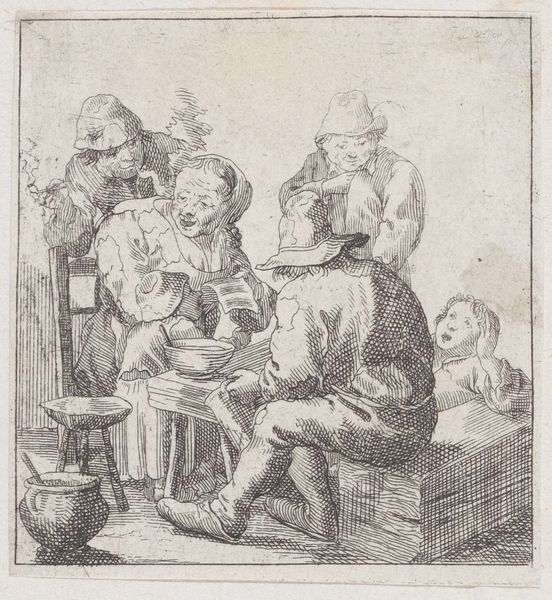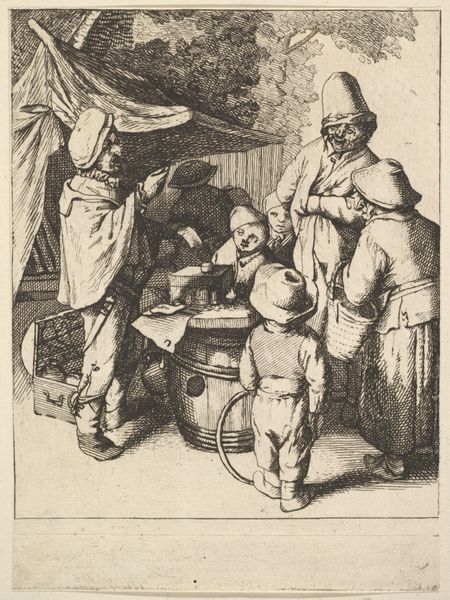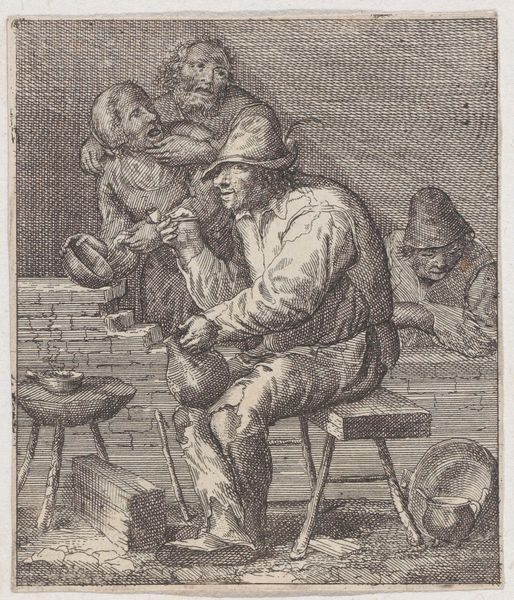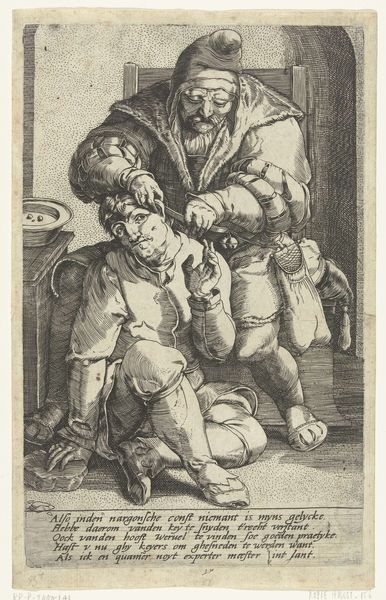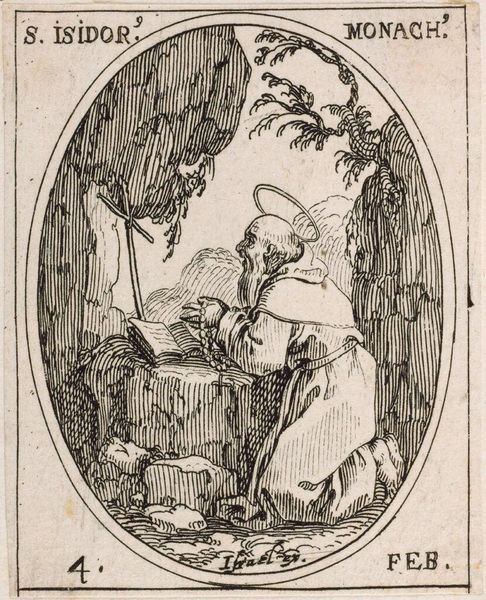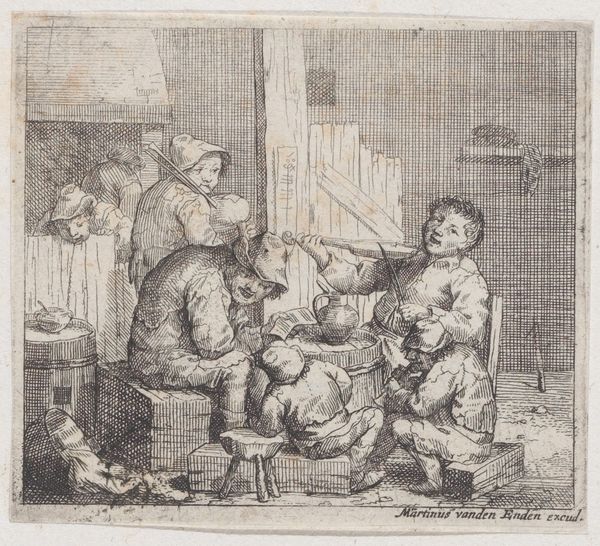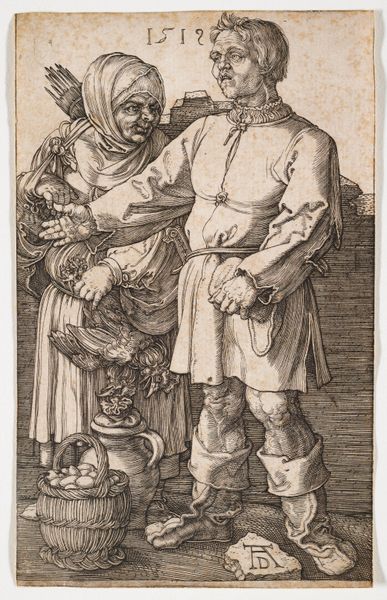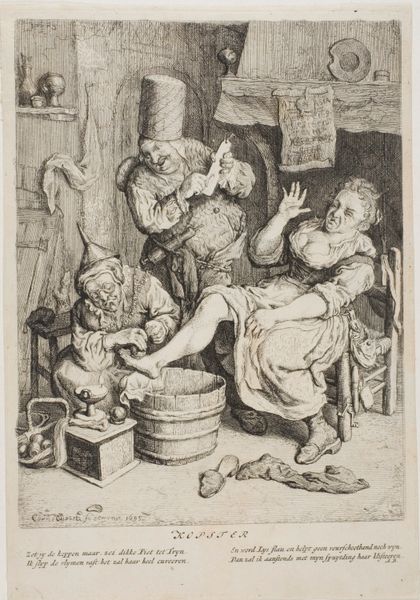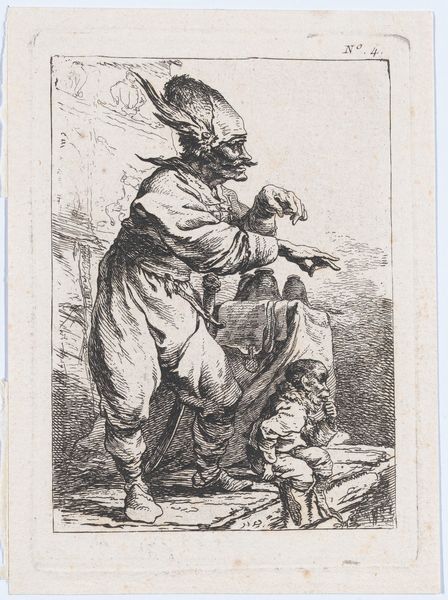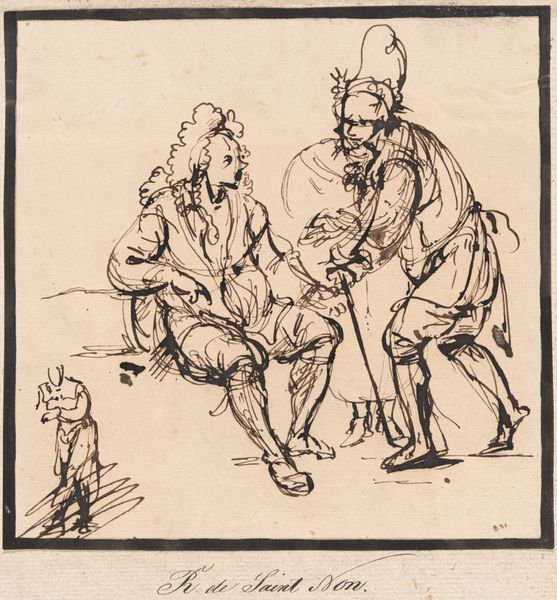
drawing, ink, pen
#
portrait
#
drawing
#
narrative-art
#
dutch-golden-age
#
figuration
#
ink
#
pen
#
genre-painting
#
realism
Dimensions: height 195 mm, width 149 mm
Copyright: Rijks Museum: Open Domain
Editor: This pen and ink drawing, "Kwakzalver met drie boeren en twee kinderen" by Andries Both, created in the 17th century, depicts a quack doctor with a small crowd of figures. The scene is lively and a little chaotic. What aspects of this work do you find most interesting? Curator: For me, it's the raw materiality of the drawing itself, the stark lines made by the pen, and what it suggests about the process. We see labor represented in the figures, but what about the artist's labor? Think about the type of ink, the quill itself—materials that were meticulously crafted and prepared. Editor: So, you're focusing on the means of production, both in the image and the creation of the image itself? Curator: Exactly. Consider how the accessibility of materials—relatively cheap ink and paper—allowed for a democratized form of artmaking. How might this accessibility influence the choice of subject, a common street scene rather than a royal portrait? It speaks to a shift in patronage and audience. Editor: I see what you mean. It challenges this idea of high art when we examine what the art *is made of*. Curator: Precisely. It compels us to consider who had access to these materials, what skills they possessed, and what stories they chose to tell through their skillful manipulations. And the act of choosing the everyday... Editor: It makes me think about how the Dutch Golden Age was fueled by trade and production, and how that trickled down, even to the art supplies. Curator: Indeed. So, beyond just representing a scene, the drawing becomes a record of the social and economic landscape of its time, doesn't it? A story in ink. Editor: That makes so much more sense. Thank you, I now understand why this is much more complex than it appears.
Comments
No comments
Be the first to comment and join the conversation on the ultimate creative platform.
